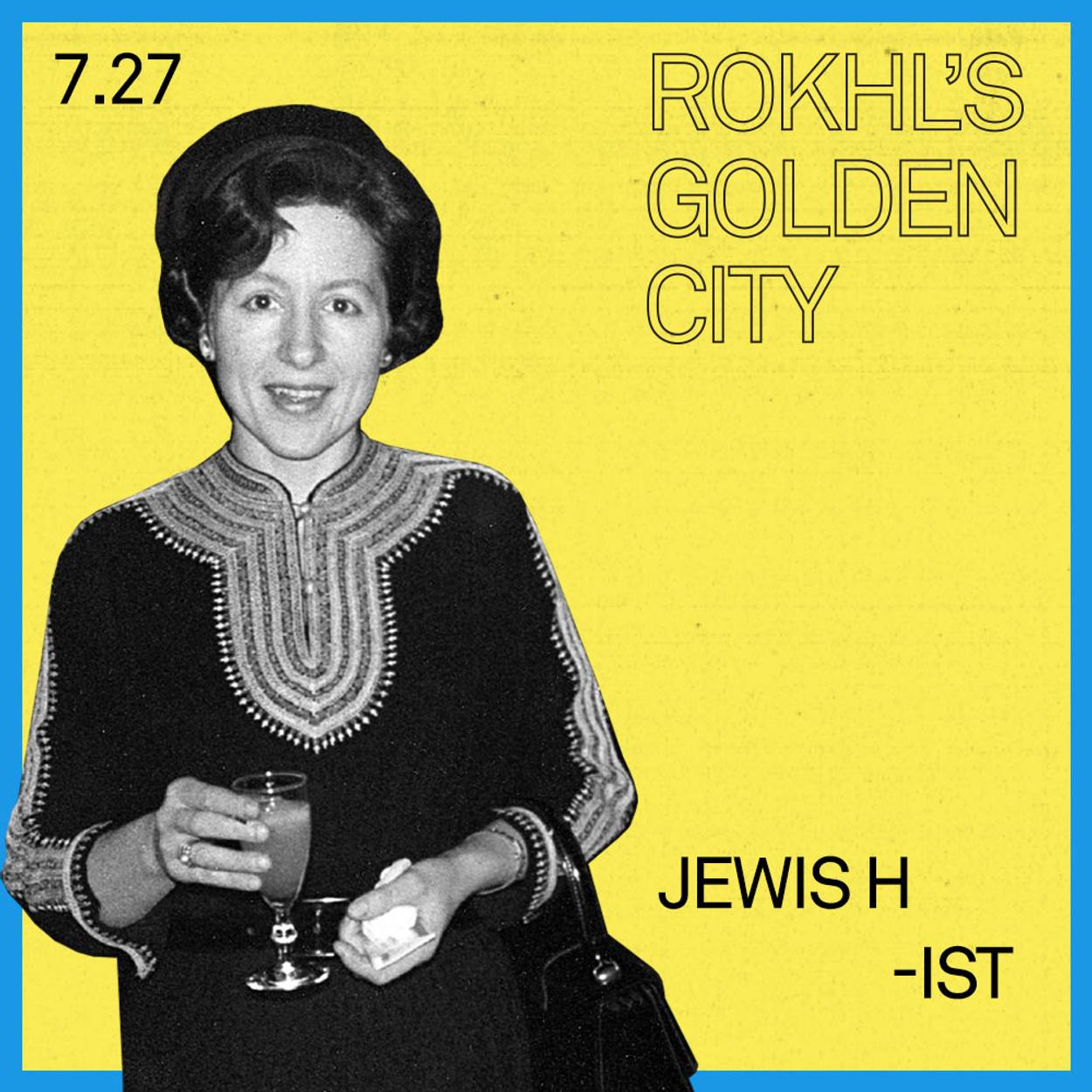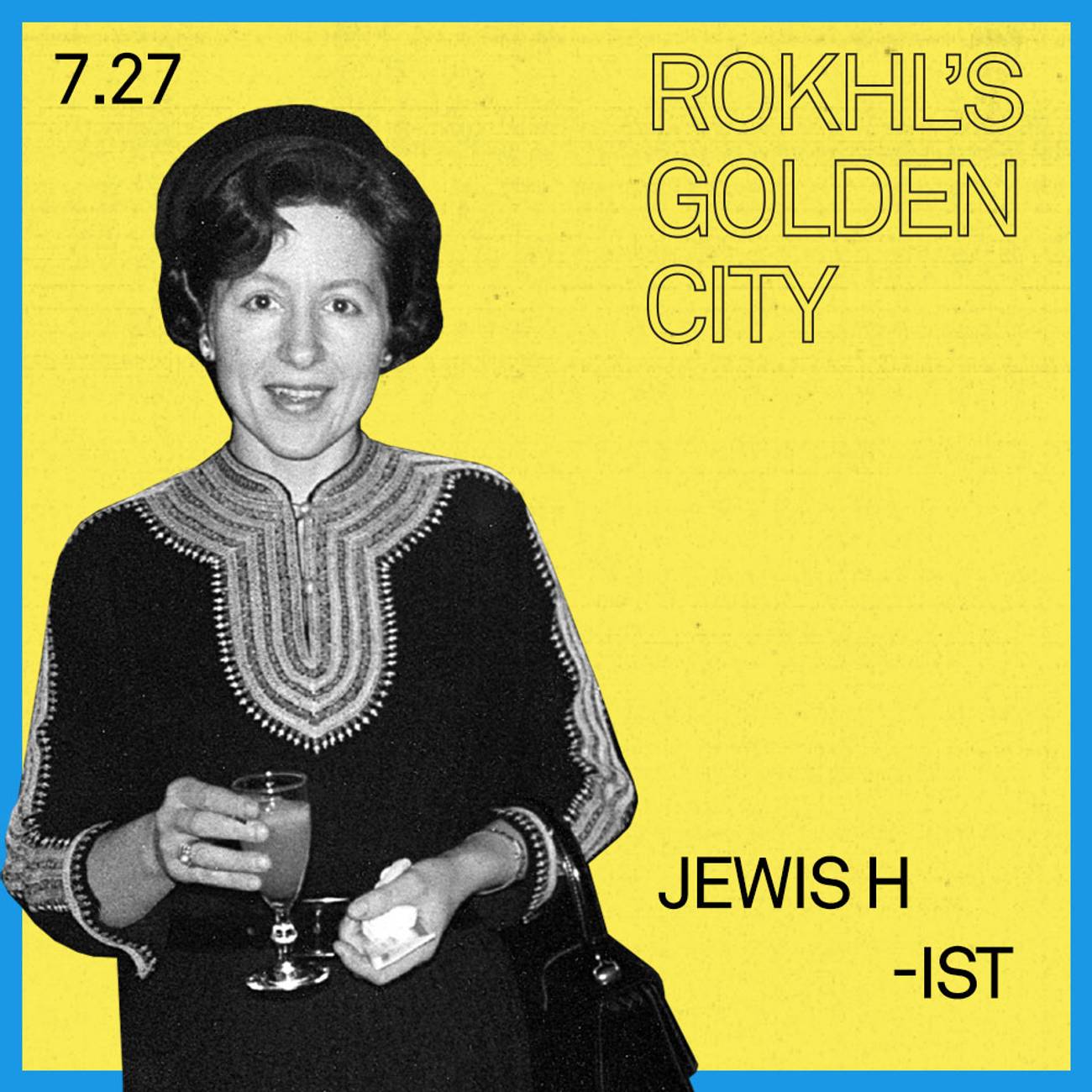A Language and a Way of Life
Chava Lapin, who died last month, believed that Yiddish couldn’t be separated from the culture of its speakers

Tablet Magazine

Tablet Magazine

Tablet Magazine

Tablet Magazine
“I’m not a Yiddishist, I’m a Jewish-ist!” That was the indignant protest of the late Chava Lapin, as recalled some 40 years later by Born to Kvetch author Michael Wex. The setting was a classroom in the mid-1980s at KlezKamp, where Lapin was teaching. One of the students had the innocent audacity to describe Lapin as a Yiddishist. The suggestion was so disconcerting that Lapin was forced to switch into English to correct her.
“Yiddishist” doesn’t have one meaning. Similar to Zionist or socialist, and not necessarily exclusive of those other ideologies, Yiddishist points to a historic set of language-centered beliefs and practices that developed alongside those other mass movements. Unfortunately, because Lapin rarely wrote (or even spoke much publicly) about her own personal beliefs, it’s not entirely clear why she rejected the label so strongly. But if you knew her, or learned from her, the label of Jewish-ist makes perfect sense.
Lapin passed away last month, at the age of 89. It was during a program marking her shloyshim, the 30 days after her passing, that Wex recalled meeting her at that long-ago KlezKamp. The Congress for Jewish Culture hosted the program and, in his introduction, CJC Executive Director Shane Baker remembered Lapin as a bridge between modern Yiddishism and traditional yidishkayt. She could read and interpret the modernist masters of Yiddish poetry, such as Glatshteyn and Leyvik, but she also had a deep understanding of the lebn-shteyger, way of life or cultural totality, of traditional Ashkenaz. To this point, Baker shared another story he had learned just recently, during Lapin’s shive. Apparently, she had been teaching a class at Stern College when it became clear that her students—young, modern Orthodox women—having grown up with prepackaged Empire kosher chickens, had never themselves kashered a chicken. So, for the next class, Lapin brought in a freshly shekhted (kosher slaughtered) chicken and improvised a new lesson plan.
I love this image because it so beautifully captures her approach to teaching. When I finally enrolled in the YIVO summer program in 2019, I was most excited to take Lapin’s loshn un shteyger (language and way of life) class. Having known Lapin for many years, I knew her class would not be warm and fuzzy, nor would there be much hand-holding. However, I think Lapin’s brusque manner threw off some of my much younger colleagues. Lapin spoke quickly and, at the age of 85, was still pretty hard to keep up with.
For Lapin, Yiddish the language could not be properly understood outside the context of Yiddish the lebn-shteyger. We read each week’s Torah portion in Yiddish. She taught us to pay close attention to the loshn-koydesh (Hebrew-Aramaic) roots of the most ordinary Yiddish words. It had never occurred to me until then, for example, that the Yiddish word for neighbor, shokhn, shares the same root as mishkan and shekhine, the indwelling presence of the divine.
Lapin had resolutely rejected our modern, computer-driven lifestyle, a choice reflected in her teaching. I asked Ben Kaplan, director of education at YIVO, for his reflections on working with Lapin: “Chava’s shteyger course was legendary at YIVO’s summer program—a rite of passage for any advanced or advancing student, terrifying for some (or many) who participated, and awe-inspiring. … I remember us making seemingly endless copies of passages from Yehoash’s Tanakh translation, as well as other materials on the luekh [traditional Jewish calendar] and other aspects of traditional Jewish life in Eastern Europe, many of which would be covered in Chava’s handwritten Yiddish annotations, some blurred by years of recopying. She was very, very old school in her preparation, and she always prepared the materials independently in quiet concentration from her desk on YIVO’s archival floor.” Indeed, when I look in my folder of notes from that summer, it’s full of photocopied pages with her Yiddish handwriting. I’m not sure if I’m relieved or disappointed she never brought in a chicken to kasher during the summer.
There’s another layer to the story of the chicken-kashering. Yes, it reflects Lapin’s belief in teaching the totality of traditional Eastern European life. But in it I see something more: a biomedical researcher’s lack of sentiment or squeamishness. Instead of dissecting frogs with her students, there were now chickens to attend to.
Long before she became a Yiddish teacher, Lapin earned a doctorate in biochemistry from McGill University in Montreal, her place of birth. In 1957, she came to New York to do postdoctoral work at Einstein Medical School. She married her late husband, Shmuel Lapin, in New York, shortly after which they moved back to Montreal.
Chava had been educated in Montreal’s Yiddish folkshul system and Shmuel had a similar background in New York. He was the son of a Yiddish poet and later wrote his master’s thesis on modern Yiddish poetry. In Montreal, he was the executive director of the Canadian Labor Zionist Movement. During that time, Chava gave birth to their three sons and taught chemistry at a Jewish day school. They moved back to New York when Shmuel was appointed executive secretary of YIVO in 1966. At YIVO, Shmuel was co-founder of the YIVO Uriel Weinreich summer program.
It was Shmuel’s tragic death in 1973, at the age of just 43, that set Chava on a new trajectory. While she had always been dedicated to Yiddish literature and culture, with three young sons to support, it would now, out of necessity, become a second vocation. She was teaching an adult Yiddish class at her synagogue when she was approached by the director of Jewish studies at Queens College, Joseph Landis, to teach Yiddish there. She protested that she was about to fly to Japan for a scientific conference and would have to miss the first two classes. Landis insisted that he would cover the classes until she was back. And that was that. Over the years, Lapin taught everywhere, including KlezKamp. She went on to teach the most summers of any YIVO summer program teacher. Much later, she spent six years as an associate editor on the Comprehensive English-Yiddish Dictionary. In 2016, she said that working on the Dictionary was “the most exciting journey of the last decade of my life.” Lapin’s learning in Yiddish literature and culture was prodigious and she was honored for her expertise.
In 1989, Lapin became the director of Yiddish culture and education at the Arbeter Ring, then still known as the Workmen’s Circle. It was there, at the Workmen’s Circle, in the shabby Yiddishist mothership building at 45 East 33rd St., that I first met her. I was working for the Folksbiene Yiddish Theatre and she must have come to our floor to consult with one or another of the WC folks who had offices near us. I quickly learned not to let slip an ill-considered Yiddish word in front of her, unless I also wanted a thorough correction.
I didn’t know much about her back then, as I was too self-conscious to expose my fumbling Yiddish, and she wasn’t the kind to talk about herself. But I did know about her previous life as a scientist. Why? Because she was a lifelong smoker. If she came up in conversation among my Yiddish world friends, her previous career was inevitably mentioned, too. A chain-smoking biomedical researcher? It was the kind of contradiction that made her seem even more intimidating. Clearly, this was a woman made of tougher stuff than I was.
Perhaps I might’ve been braver, and my Yiddish would’ve improved, if I had been a smoker, too. Despite how physically damaging it is, I’m always a little envious of the smokers’ camaraderie, and the shared experience it provides. Wex recalled that his real introduction to Chava Lapin was in the roykher vinkl, the smoking area, at KlezKamp.
To mark Lapin’s shloyshim, Wex, himself deeply knowledgeable in Talmudic learning, led a study of the final mishne of masekhes tones (fasts). Lapin’s uncle, Simkhe-Bunim Pyetrushka, had been a child prodigy in Talmudic learning (known as an ile in Yiddish). Later on, he authored two significant works in Yiddish, a folks entsiklopedye and a Yiddish translation and commentary on the mishne. It was Pyetrushka’s translation which was used for the shloyshim sium mishnayes.
If you understand Yiddish, you can watch the entire thing here:
The mishne right before the last one deals with the fast of the 9th of Av (Tisha B’Av), making it an appropriate choice for this time of year. But the very last mishne is surprisingly joyful. On the 15th of Av (Tu B’Av), we learn, the daughters of Jerusalem wore white and the men were encouraged to choose a wife. Based on what? “‘Do not set your eyes toward beauty, but set your eyes toward a good family,’ as the verse states: ‘Grace is deceitful and beauty is vain, but a woman who fears the Lord, she shall be praised.’” These lines are also found in “Eyshes Khayil” or “A Woman of Valor,” a hymn traditionally sung on Friday night.
In the 2010 Tsukunft interview, Lapin was typically blunt but precise about her religious philosophy: “In my home, where I served as the head of the house and the mother, Shabbos was Shabbos. And yontev was yontev. It was traditional, albeit not crazy religious.” Though I had my philosophical differences with her, I deeply appreciate the way she modeled an approach to modern Jewish life. Immersed in text and lived tradition, balanced between frumkayt and takhles, she was truly an eyshes khayil, a woman of valor, who set the highest standard for Jewish learning, and whose loss will be felt for a very long time.
CHAVA: Boris Sandler’s interview with Chava Lapin originally appeared in the 2010 issue of Tsukunft. You can read the entire thing in Yiddish here or the English translation here … You can listen to the audio from one of Lapin’s loshn un shteyger classes from 2018 here … The Forverts published a lovely obituary for Chava Lapin, written by Sheva Zucker. Read it here.
ALSO: Want to take an insider’s tour of Hasidic Brooklyn but can’t make it to New York? Tour guide Frieda Vizel will present an online program in which she will share her story of leaving the Hasidic community, her work as a tour guide, and more, in A Taste of Hasidic Brooklyn. This event will be conducted mostly in Yiddish. July 30, 6 p.m. Free, reservations required … Attention Portland, Oregon, friends: You will have a rare chance to learn and play with the Klezmer Institute’s brilliant Christina Crowder. She will lead a klezmer workshop called “Playing Kiselgof: Reimagining Lost Klezmer Music of Ukraine.” Aug. 1, 7 p.m. at Eastside Jewish Commons. Information here … Los Angeles friends: South America comes to LA when the band Klezmer Juice (led by Argentine-born Gustavo Bulgach) will be joined by Brazilian Yiddishist-singer Nicole Borger at Der Nister Downtown Jewish Center. Aug. 3, 8 p.m. Information here … An all-star Jewish foodie lineup will dive into a question that touches on some of my own favorite topics, “What Did Our Great-Grandparents Eat for Breakfast?” This online program is presented by the Forverts. Noon, Aug. 7. More information here … New Yiddish Rep presents an evening of new Yiddish song (and more) with Ricki (Rivtchu) Rose, with special guests Lori Leifer and Amy Coleman. Sunday, Aug. 13, 315 West 39th St., Studio 611. Buy tickets here … Spend a magical week in the Laurentian mountains of Quebec playing klezmer music and learning in Yiddish! There are still spots open for KlezKanada 2023, Aug. 23-29. Information here.
Rokhl Kafrissen is a New York-based cultural critic and playwright.